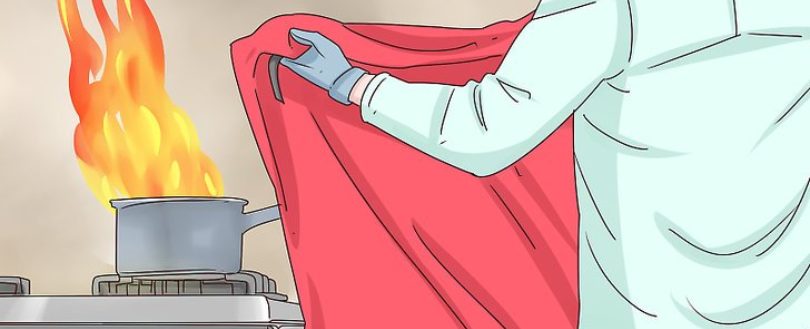- Homepage
- News
- Blogs & Articles
- How to select, install, maintain and commission a fire blanket (correctly)

How to select, install, maintain and commission a fire blanket (correctly)
Like it? Share it!
11 April 2019 by Robert Thilthorpe, FIA Technical Manager
Fire blankets might sound simple – but there are plenty of essential rules to follow to ensure that the fire blanket does what it is meant to: smother a fire and put it out.
If you’re a building owner, a consultant, a fire risk assessor, part of the fire and rescue services or just work in the fire industry – then all the below information will help you to be able to select, install, maintain, and commission a fire blanket (or choose someone who can).
First things first: fire blankets are designed to extinguish small fires in and around the kitchen and the home. In some instances, the blanket alone may not be enough and a portable fire extinguisher may also need to be used – for example fires in small containers where the blanket creates a lid, such as food in a sauce pan or waste in a small bin.
In all instances of possible causes of fire, it is important to consider the potential size of the fire and therefore the size of blanket required. BS EN 1869 fire blankets come in three sizes: 1.1m x 1.1m; 1.2m x 1.2m; and 1.8m x 1.2m. A smaller blanket might be suitable for things such as spilled candle wax on a counter, or food in a frying pan or a baking tray, but not for other purposes. As such the use of fire blankets should be tailored to the type of fire that it is likely to be used for, and every opportunity should be taken to instruct personnel in the use of fire blankets, and to demonstrate their performance.
The next thing to note is that the location of the blanket and accessibility of said blanket are vitally important. As you likely know, small fires can very quickly become large fires in a matter of minutes or even seconds, so the location of the blanket becomes particularly vital in these situations, since it will be used for first aid firefighting.
Fire blankets should not be located where a potential fire might prevent access to them; over or close to heating appliances; in concealed positions behind kitchen furniture and/or equipment, behind doors, in cupboards, drawers or deep recesses; or where they might be damaged.
The best place for a fire blanket is mounted on the wall, marked with the correct signage, red in colour, and where they will be easily seen. A fire blanket should be in the same room as where it is likely to be used and the user of the blanket should not have to walk through any doorway in order to gain access to the blanket (due to the fact that by the time they come back, a fire blanket may not be adequate, since the fire may have spread and be too large for a blanket to work).
The process of the commissioning a fire blanket should involve a visual inspection of the blanket itself. Check that the fire blanket has not been used, is not obviously damaged, or has any hand hold devices missing/unsatisfactorily affixed to the blanket.
After any visual inspection is important to put the blanket back exactly as directed by the manufacturer. Remember to replace any safety element designed to show whether the blanket has been deployed, and ensure the blanket is clean and dust free, ready for use again.
A full explanation of commissioning a fire blanket is available in our technical document, ‘Code of Practice for the Selection, Installation, Commissioning and maintenance of Fire Blankets manufactured to BS EN 1869’, including a step by step walkthrough, and more in-depth information regarding servicing, labelling, and when to replace a fire blanket.
The guide has been recently updated with the latest information and written by industry experts to provide you with the most accurate information possible about fire blankets.
Read more news and blogs
-
Serviced Apartments: An Emerging Fire Safety Risk
NEWS | 17 December 2025
-
Invitation to Contribute to MHCLG Consultations
NEWS | 16 December 2025
-
Research Reiterates the Risk of Fires Posed by ‘Hot Work’
NEWS | 16 December 2025
TAGS
-

Robert Thilthorpe
FIA Technical Manager
Related posts
-
New fire safety standards: FIA announces BS 5306-8: 2023 updates
08 January 2024
By Robert Thilthorpe, FIA Technical Manager
-
Ensuring fire safety in schools: responsibilities, developments, and training
06 October 2023
By Neil Budd, FIA Technical manager
-
On this day, forgotten disasters: Summerland disaster
02 August 2023
By Kirsty Lavell, Marketing Manager
Related news
-
Business Owner Fined for Breaching Fire Safety Legislation
06 October 2025
-
Technical Notice: PFOA Ban Update
03 July 2025
